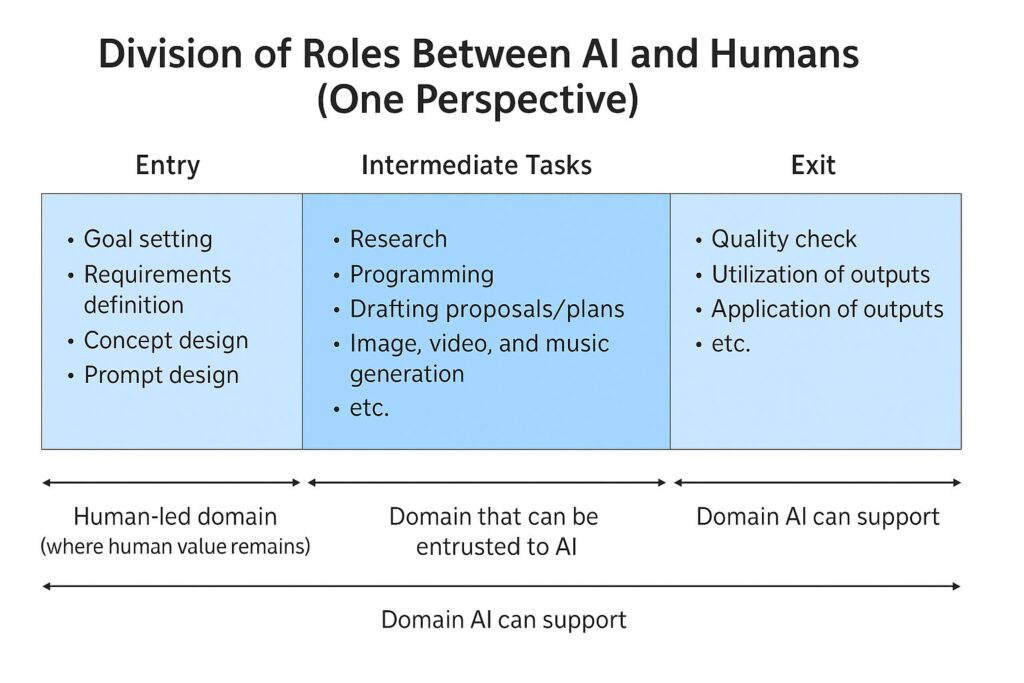With the advent of AI, humanity has gained the means to dramatically reduce the cost of producing all kinds of content, while also significantly shortening production time. Furthermore, with the emergence of AI-powered robots and AI-driven cars, this year could well be described as the starting point of AI gaining physicality—that is, autonomous physical capabilities. It is beyond doubt that, in the not-so-distant future, humankind will be completely liberated not only from knowledge-intensive tasks but also from labor-intensive work.
In preparation for such an era, we must clarify the basic principles of how humans and AI can coexist and prosper together. I believe the following points are particularly important:
- Clearly distinguish between what should be entrusted to AI and what must not be.
- Maintain the principle that humans are the primary actors, and AI remains subordinate.
- For example, Microsoft calls its AI tool Copilot, and Taiwan’s Audrey Tang refers to AI as Assistive Intelligence. I believe this positioning is the correct one.
- When tasks are better handled by AI, humans should refrain from intervening and allow AI to take the lead.
- Never outsource the act of thinking entirely to AI. Instead, view AI as a tool to upgrade and expand one’s own thinking.
- Invest not only in AI itself but also in the education and development of new human talent—those capable of handling tasks that must not be delegated to AI.
As one way of looking at the division of roles between AI and humans, I believe the diagram below provides a useful perspective. Already, every task humans perform can be supported by AI from beginning to end. Yet the areas where human value truly remains are likely at the entry and exit points of the process. The middle portions, in contrast, are often best left entirely to AI.

In summary, I have outlined some basic principles for facing the age of AI.